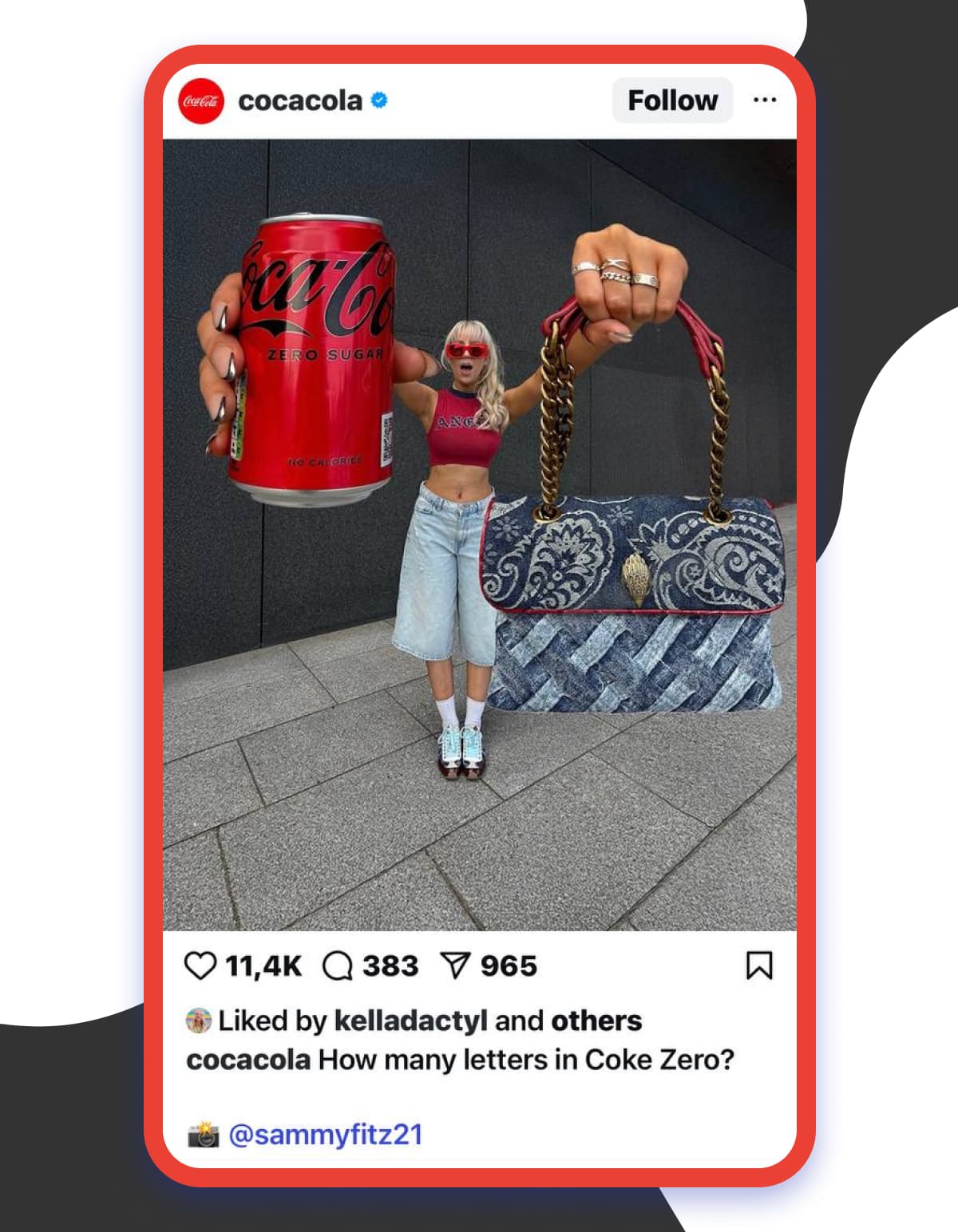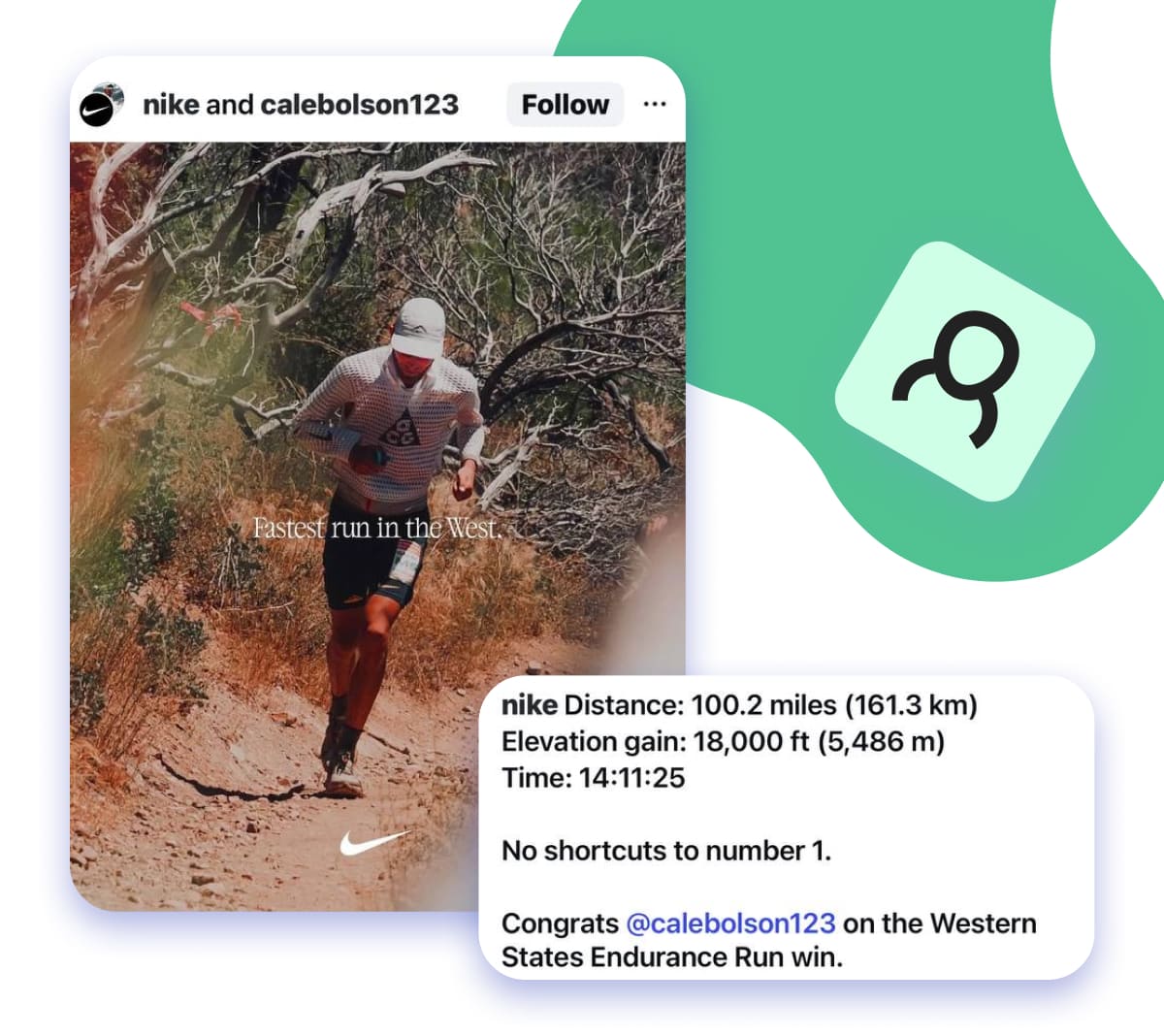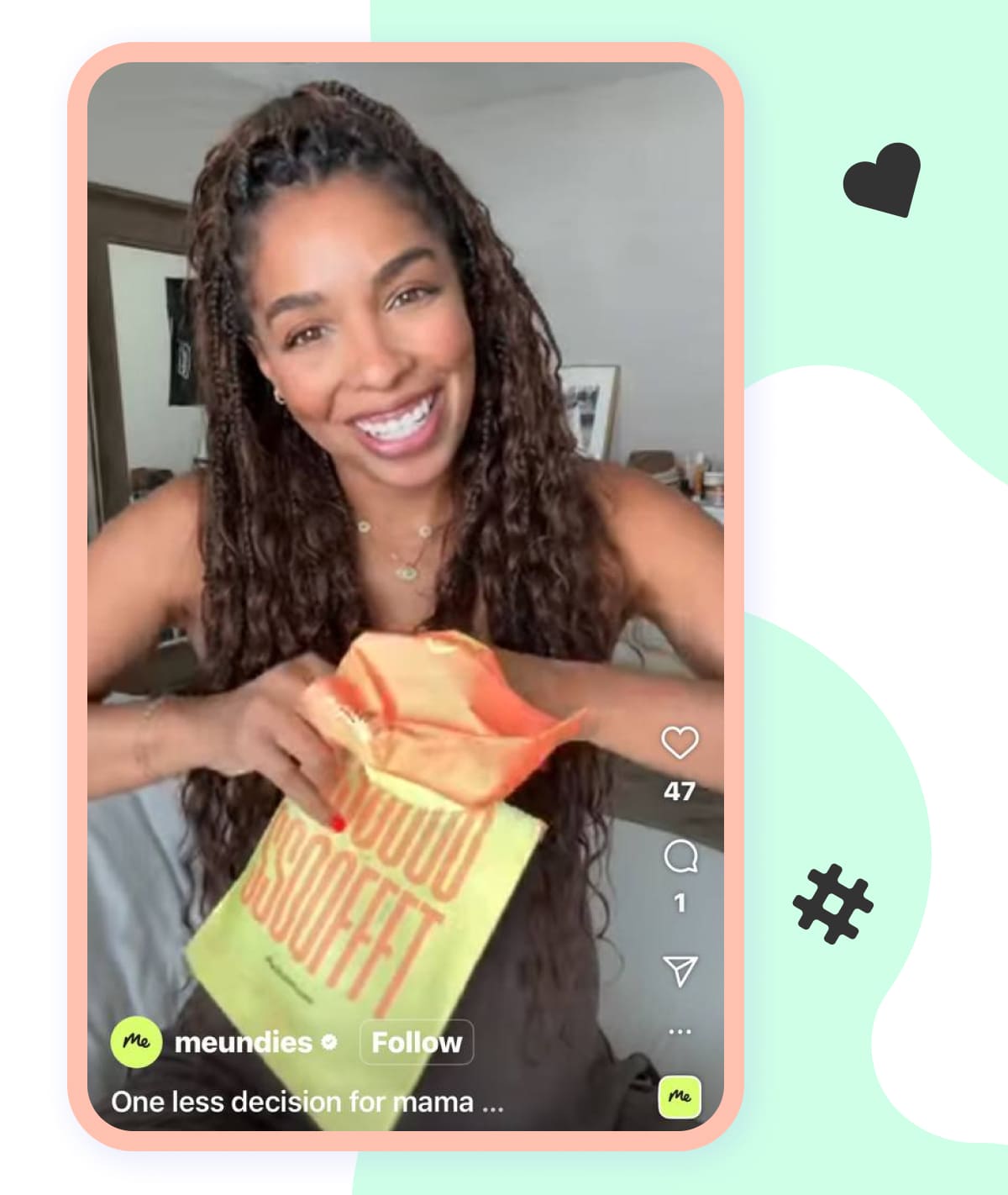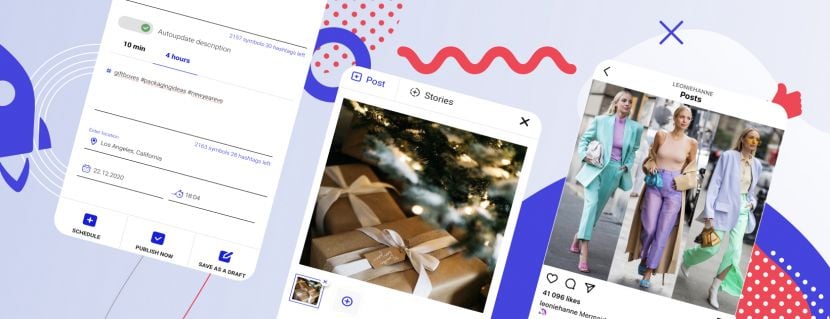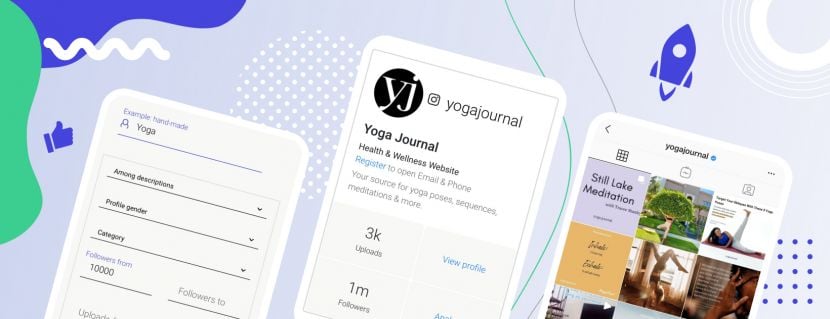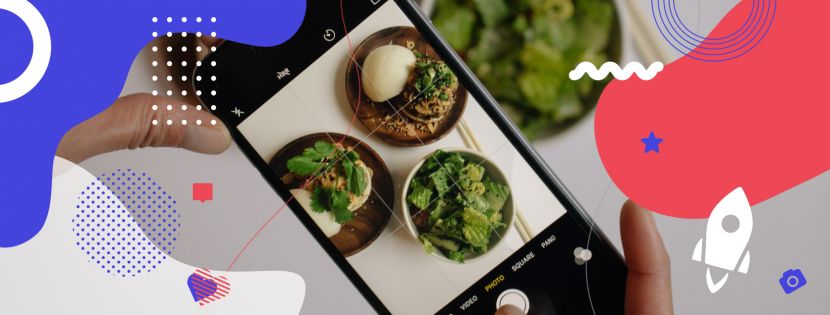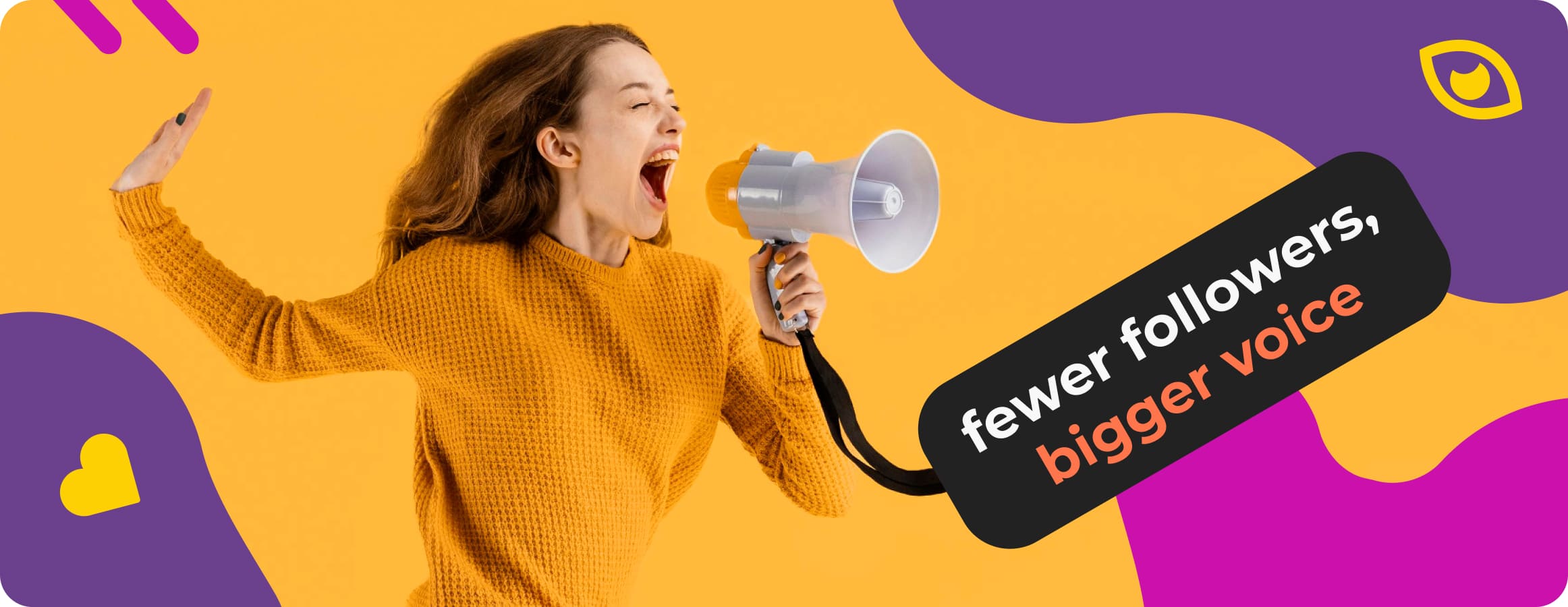
Back in the day, influencer marketing used to be all about the follower count, until people started to realize that it’s a lot more than that.
As the space has matured, brands have discovered: authenticity, trust, and engagement can matter more than reach. That’s where micro-influencers shine.
In this article, you’re getting a clear-cut look into the right way to work with micro-influencers and why fewer followers can have a far bigger impact.
What Makes Micro-Influencers Effective?
You might feel doubtful about using micro accounts for influencer campaigns, but it’s important to look past the surface.
Let’s start by answering the question ‘What is a micro-influencer?’. The term refers to accounts that have 100,000 or less followers and focus on niche interests and communities.
This has proven to generate deeper connections with their following, as opposed to an echo chamber of one million people. It’s all made possible through better relatability and much more consistent engagement with the audience.
Because micro-influencer content tends to be more personal, it communicates niche expertise and delivers targeted results. For this particular type of influencer marketing, the benefits stem from authenticity rather than internet fame or pure reach.
As you might expect, it isn’t as simple as it sounds, and there are several layers to consider here.
Higher Engagement Rates
It’s not just that micro-accounts see more engagement, it’s about the quality of engagement. Many celebrity influencers’ accounts become flooded with bot profiles and disingenuous interest. This doesn’t bode well for brand recognition or effective marketing.
That isn’t to say an influencer marketing agency shouldn’t work with larger accounts, but it could be a much costlier endeavor with lower ROI. You want to lean into your target audience, but not at the expense of emptying your marketing budget. In short, micro-influencers tend to deliver rich engagement that isn’t diluted.
Built-In Trust and Reliability
When the community is smaller, viewers tend to gravitate toward it more. In many cases, micro-influencers work alongside and cross-post with similar influencer partners. This comes out to be a lot more hands-on with their niche audience.
Here are a few other upsides to what can happen when you choose the right influencers:
- Recommendations from these influencers feel a lot more authentic
- Content isn’t oversaturated with other brand messaging
- Рonest and personal content enhances credibility
- Targeting smaller audiences can lead to higher conversions
Niche Expertise
Mega influencers offer massive reach, but their content can sometimes feel less personal. Larger influencers sometimes resemble a walking brand image, and their content often doesn’t showcase authenticity.
On the micro front of digital marketing, accounts are a lot more specific about how they curate promotional content. Many of them are already seen as experts in their focus area, which means audiences are a lot more inclined to trust what they say.
Micro-influencers offer niche brand values and heavily lean into specific topics. Taking this route promises more personalized campaigns, stronger relationships, and end results.
Cost-Effective Collaboration
Depending on the type of marketing strategy, social platform, and accounts you’re working with, costs can vary quite a bit.
Working with micro-influencers is best for small and growing businesses. Having the support of a cost-effective approach to scale your business is better than dumping the entire budget on a single account.
Examples of Brands that Work with Micro-influencers
For those on the search for reliable case studies, there’s an endless list of brands happy to work with micro influencers. Below, you’ll find several examples of notable companies that commonly use micro-influencer marketing.
Coca-Cola
As you might expect, Coca-Cola is pretty clever about getting their drinks in front of people’s eyes. This can be seen in their use of social media channels, in addition to micro-influencers.
Even though Coca-Cola has more than enough money for mega influencers, they understand the value in more niche audiences.
Audible by Amazon
While Amazon has many different products and ventures in today’s market, Audible still stands out. Considering the digital format of Audible, it only makes sense to put it in front of an audience that’s interested in tech.
For example, they once partnered with an influencer named Jesse Driftwood, a photographer. A single Audible-sponsored post with Jesse drove over 10,000 likes, 300 comments, and boasted a 30% engagement rate.
Nike
A brand name that speaks for itself, and it still makes its way into the micro-influencer crowd. Between their Nike Affiliate Program and targeting specific niche accounts, the brand successfully layers its marketing strategy.
Their own Instagram account boasts almost 300 million followers, which might sound like they don’t need influencers. Yet, considering the cost efficiency, it’s hard to pass up. This is where user-generated content can really work, especially if targeted to the right audiences, such as sports fans.
With literally a few billion users on Instagram, it can feel challenging to find the right social media influencers. However, with the proper search criteria, you can easily narrow it down to those who align with your brand or product most.
Below are several considerations to help you find influencers that make the marketing dollars worth it.
1. Defining Goals
Make sure your campaign objectives are clear. This includes brand awareness, short and long-term partnerships, engagement, conversions, and more.
2. Set Clear Criteria
Your focus should be on audience relevance over anything else.
3. Use External Tools
One way is to manually search for the right influencers through hashtags. Alternatively, you can use tools like an Instagram profile analyzer.
4. Get into Existing Communities
Dive into your existing audience, followers, and customers to find potential collaborations from within.
5. Identify Potential Red Flags
Keep an eye on engagement rates and spam content so your brand doesn’t oversaturate the audience.
6. Verify Authenticity
Prioritize genuine content, consistent engagement, and growth over follower counts or celebrity status.
It can feel easier said than done for growing brands, but eventually, you’ll have a roster of micro-influencers you can always rely on.
How to Work with Micro-Influencers?
Generic messaging usually won’t get too far, even with smaller accounts. Most people can pick up on spam pretty easily, so it’s best to personalize each message for each influencer.
This shows that you understand the effort they put into their content and the audience they’re focused on.
The list below offers a few safe steps on how to reach out to influencers:
- Start by identifying micro influencers relevant to your industry
- Research their content and then personalize your outreach
- Start an authentic conversation and move to discussing vision, motivation, and compensation
- Talk about clear deadlines and what deliverables are included
- Provide them with a brief agreement to look over before finalizing any deals
Planning ahead can make this whole process a lot easier. Once again, tools like the Instagram Profile Analyzer can help streamline your decision-making.
For those interested in learning how this works, check out the video tutorial below for a more hands-on look.
Planning Efficient Micro-Influencer Campaigns
Efficiency is more important than speed in this conversation. You want to start by being extremely clear about your content goals and any included guidelines. Creators won’t know exactly what you want, so you’ll need to be descriptive.
While you might think handing over a script is a good idea for micro-influencers, it’s actually the opposite. You want to do your best to blend your brand into their existing tone and content style.
Whether they find success through Instagram reels, 24-hour stories, or carousels, it’s best to listen to them on what works best for their audience.
Even if you’re only interested in a one-time post, if it’s successful, you want to be prepared to form a long-term partnership.
You might feel compelled to check in or micro-manage the creative process because money is involved, but that’ll only disrupt the campaign. It’s best to convey your wants and needs and listen to the creative direction of the influencer.
Measuring Your Micro-Influencer Campaign Success
Although you want to put a good amount of trust into the influencer, you still need to watch the metrics. This includes follower growth, brand awareness, engagement, and actual conversions.
You also want to keep a close eye on the quality of the engagement, as not all numbers are going to be effective for your end goal.
This can be pretty taxing if you take the manual approach, which is another example of why external tools can be so helpful.
A good example of this would be the Instagram Profile Tracker, which gives you all of the analytics you need in one place.
Common Pitfalls and How to Avoid Them
The realm of influencer marketing has been around for years now. That doesn’t mean brands aren’t running into mistakes.
Some solely rely on follower count or a single viral post to gauge their return on investment. You have to work with data-backed decisions here, which requires a thorough approach.
Here are several common pitfalls you should look out for:
- Don’t select influencers based on follower count alone
- Review their engagement over the long term
- Always make your expectations abundantly clear
- Keep communication channels open
- Make sure you don’t breach any legal guidelines
- Signed agreements should clarify content usage rights
Remember that you don’t have to be perfect at every turn. In the same vein, you can get the best results possible by being thorough in your selection process and collaborative with the creators you’re working with.
Key Takeaways
- Search for micro influencers within the 10,000 to 100,000 follower range
- It’s always quality over quantity when it comes to content
- Brands, large and small, both utilize micro-influencers
- Finding the right creators starts with alignment in content tone, niche, and branding
- Effective collaboration demands personalized outreach and ongoing communication
- Work with several content formats such as reels, stories, and carousels
- Measure your success, avoid the pitfalls, and plan for long-term results
FAQ
How can influencer marketing help brands?
This approach gives brands of all sizes the opportunity to connect with relevant yet niche audiences that have a track record of reliable engagement. Repeating this process is proven to be effective for more meaningful conversions.
Will influencer marketing last?
Considering its past and current trajectory, influencer marketing won’t be going anywhere anytime soon. If anything, it’s hitting an entirely new wave, including multiple layers to influencers, audiences, and content styles.
How to work with micro-influencers?
Personalizing your outreach is the best way to get in touch. From there, it’s about aligning your needs with the tone of their content and your brand for the best results.
What are the brands that work with micro-influencers?
Companies like Coca-Cola, Amazon, and Nike are just a handful of examples. This goes deeper than you think, with many well-known organizations working with micro-influencers and UGC to help drive brand awareness and sales.

